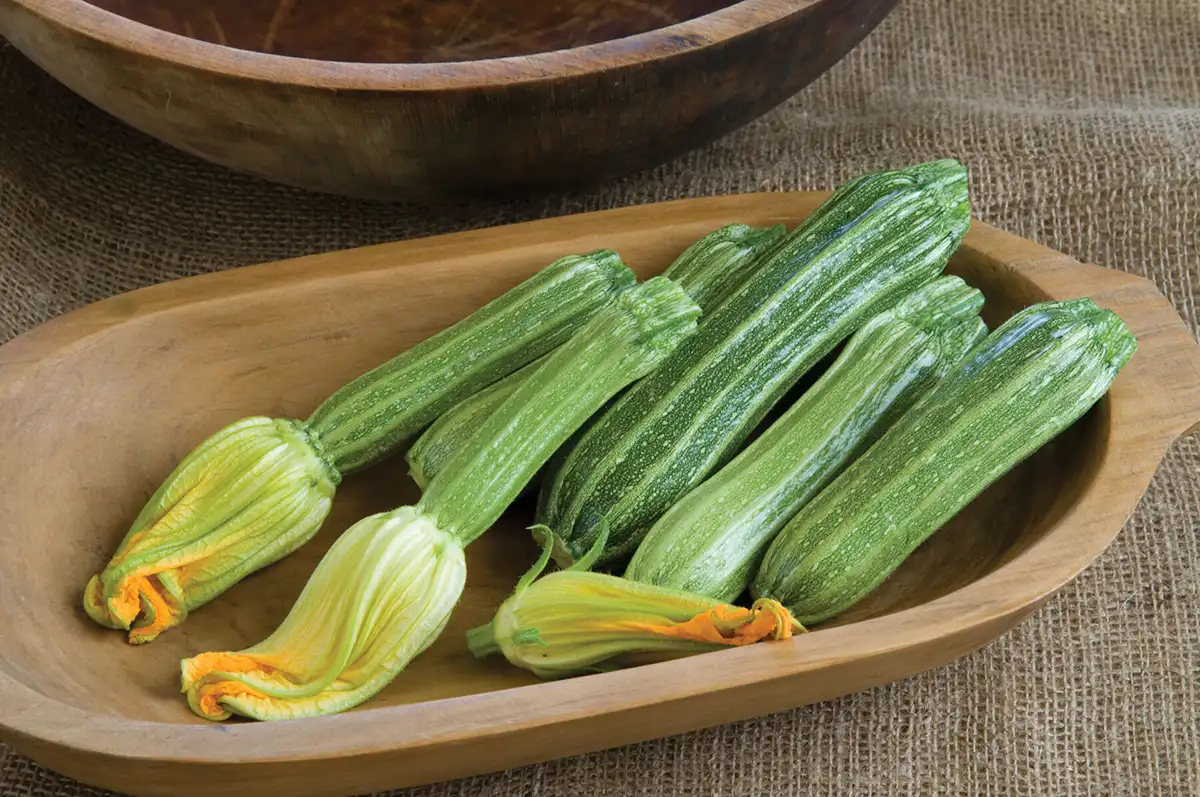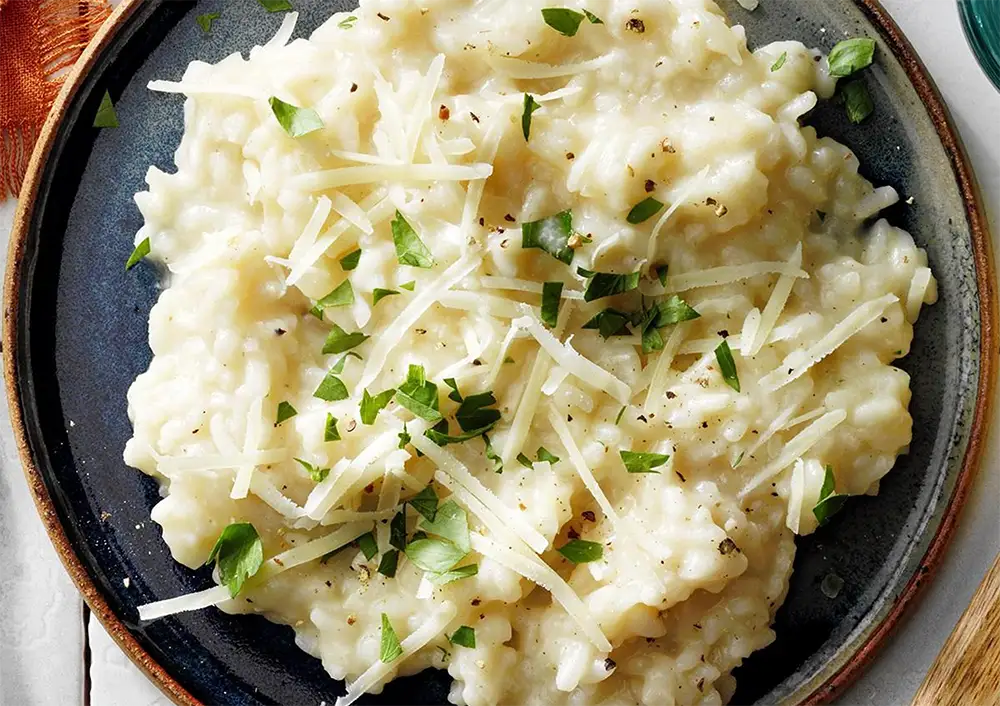Zucchini
Zucchini, like all squash, comes from the Americas, specifically Mesoamerica. However, the varieties of green, tubular squash harvested immature and typically called “zucchini” were cultivated in northern Italy, as much as three centuries after the introduction of squash from the Americas. The first records of zucchini in the United States date to the early 1920s. It was almost certainly taken to America by Italian immigrants and probably was first cultivated in the United States in California.

Also known as a courgette in Europe, the ordinary zucchini can be practically any shade of green, striped, even a rich golden color. Most are tube shaped but some are round. In botany, the zucchini’s fruit is known as a pepo, a berry – the swollen ovary of the zucchini flower.
When used for food, zucchini are usually picked when under 8″ in length, when the seeds are still soft and immature. Mature zucchini can be 40″ long or more. The larger ones are often fibrous. A zucchini with the flowers attached is a sign of a truly fresh and immature fruit, and it is especially sought after for its sweeter flavor.
Zucchini has a delicate flavor and requires little more than quick cooking with butter or olive oil, with or without fresh herbs. The skin is left in place. Quick cooking of barely wet zucchini in oil or butter allows the fruit to partially boil and steam, with the juices concentrated in the final moments of frying when the water has gone, prior to serving. Zucchini can also be eaten raw, sliced or shredded, in a cold salad, as well as lightly cooked in hot salads, as in Thai or Vietnamese recipes. Zucchinis can be cut with a spiralizer to make zucchini noodles that act as a spaghetti substitute for low-carbohydrate recipes. Zucchini is usually served cooked and can be prepared using a variety of cooking techniques, including steamed, boiled, grilled, stuffed and baked, barbecued, fried, or incorporated in other recipes such as soufflés. Mature (larger sized) zucchini can also be baked into a quick bread, or incorporated into a cake mix to make zucchini cake, similar to carrot cake. Its flowers can be eaten stuffed and are a delicacy when battered and fried.
Nutrition
Zucchini are low in food energy (approximately 71 kilojoules or 17 kilocalories per 100 grams or 3.5 ounces fresh zucchini) and contain useful amounts of folate (24 μg/100 g), potassium (261 mg/100 g), and provitamin A (100 g).
Recipes
Zucchini Fritters
Stuffed Zucchini Blossoms
Zucchini Gallette with Herb Ricotta
Zucchini Fries with Marinara
Dark Chocolate Zucchini Brownies
Ratatouille Stuffed Summer Squash
Everything you ever wanted to know about zucchini…
Recipe Box
Lorem Ipsum is simply dummy text of the printing and typesetting industry.
Parmesan and Shallot Risotto
A yummy side to warm your heart and taste buds!
View All Recipe
Stay Connected
Sign up for e-news to learn about special events and offerings.